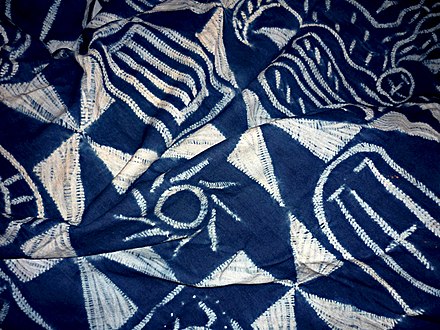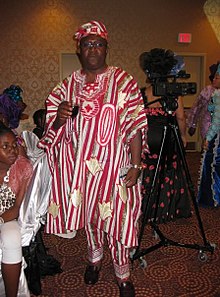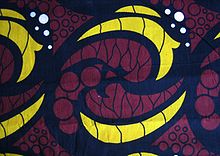![IMG_2962[1]](https://theart178.wordpress.com/wp-content/uploads/2018/03/img_29621-e1520283559227.jpg?w=840) During the past three weeks, the aim of this project was to create an imaginative and wacky fashion garment, that included African pattern and inner tubes, for the Cycle of Good.
During the past three weeks, the aim of this project was to create an imaginative and wacky fashion garment, that included African pattern and inner tubes, for the Cycle of Good.
I began the project by mind mapping and then exploring Pinterest for garments and accessories that gave me inspiration for my design. Furthermore, I used my animal photography from the first part of the project as inspiration behind the African animal print and silhouette shapes.
I used a variety of techniques that I acquired in the first part project as well as developing new skills. In order to construct my skirt, I needed some patterned tie dyed material. Therefore, I researched online and found a blog post which included 16 different pattern tie dye techniques and used the instructions to create a blue triangular pattern.
Pinterest featured a range of feather inspired garments, so using certain images, I developed my neck piece to feature inner tube feathers. I used the shapes they create as a base idea and further developed the feathers to have frayed edges so that they looked more realistic and had more stability so that they didn’t curl. I decided that the inner tube was very tough to sew and would curl easily, so I stuck to cutting them out singularly and hot gluing them onto the clear plastic.
Researching helped developed my work as I aspired to create an avant-garde inspired garment, therefore perusing Pinterest was a valuable researching facility, as I was able to refine and develop my garment using the information available. Since I had never made a bralette (the top part of my dress) before, I was able to research on Pinterest, various patterns and techniques, which helped me to find an easy and informative videos.
Some of the parameters in the project were the time limit of 3 weeks to make an entire garment, and that it must include inner tubes and African animal print pattern.
I planned to finish the garment within the time scale by using an action plan; that way I would set targets that needed to be completed by the end of the week. This was going to be successful, however because of the weather constraints, I was unable to complete my garment. If extra time is offered, as well as using my self-directed time, I will be able to complete my garment, still within the time I expected to finish.
Furthermore, when designing my garment, I always based my idea around inner tubes and african print, instead of adding it later. This meant that there was more emphasis and focus on these two features instead of being a last-minute ‘add on’ that lacked uniqueness and creativity.
A problem that occurred in my design, was that the neck piece I had made, was heavy and would fold over on itself instead of standing tall. This was a problem that I predicted, therefore I decided to make a wire structure and an inner tube collar. The collar would provide more stability and comfort as well as hiding the rough plastic edges, and the wire structure would hold the neck piece up.
Since I wasn’t going to cover the back of the neck piece in inner tube feathers, the clear plastic showed the messy glue and feathers, as well as featuring an ugly metal structure. Therefore, I decided to cover the back with my leftover African sublimation print paper, so I cut them into feathers and stuck them on with double-sided tape. The paper was only going to go in the bin and I couldn’t decide what to cover up the back with, but overall I really like the pale and pastel outcome.
When I first designed my garment, I was unsure where to include my African print pattern. I designed to make the skirt of my dress using purple tie dye with blue screen printed animals. However, when I found it difficult to find a decent supply of the coloured feathers I wanted, I decided to change the colour of the tie dye to blue and integrate my animal pattern elsewhere.
This worked out for the best when I came to create my top, because I was at first unsure of how to make the design and was still experimenting with different ideas. I then was able to do further research and find a bralette style pattern that could easily let me incorporate my animal print pattern. Furthermore, to match the colours of my feathers, I used Photoshop to change the colour of my animal tie dye photograph, which I then sublimated onto fabric. After I cut out my template of my fabric, I used the leftover off cuts to create a matching halterneck strap.
Overall, I’m very pleased with my design and garment, because even though I changed things and different emblems occurred, it all helped to shape and develop my garment into a more Avant-Garde and imaginative piece that had a glint of style. As my first proper sewing challenge, I think I handled the task well and tackled things step by step. Internet researching certainly helped in the designing and using beginning sewing books like ‘Sew step by step’ by Alison Smith gave me advice on how to do/learn new skills to improve my garment. I enjoyed designing something that looked tricky to make, and perceiving and finding solutions to make things work, as doing something challenging spurs me on to learn new skills and processes. I think I answered the brief very well, as my design amalgamated tough and sturdy inner tubes with intricate animal print, to create an eccentric and imaginative garment.

![IMG_2598[1]](https://theart178.wordpress.com/wp-content/uploads/2018/02/img_25981-e1518693808769.jpg?w=840) I began the week by creating a mindmap featuring my possible outcomes, techniques and processes. As my mindmap developed, I knew I wanted to do something with feathers as I thought it would be interesting to try making them from inner tubes. From this, I created a Pinterest board featuring a range of Avant-Garde, African and animal inspired fashion. These together helped me create a wide range of thumbnails, which included inner tube head pieces and flared fringe boots, to laser cut inner tube skirts and dresses made from feathers. I then developed my ideas into detailed colour drawings, however I couldn’t decide which one I liked best. I picked out different elements from each design that I wanted to include, then I created 4 more designs featuring feathers, milk bottle tops and laser-cut inner tube.
I began the week by creating a mindmap featuring my possible outcomes, techniques and processes. As my mindmap developed, I knew I wanted to do something with feathers as I thought it would be interesting to try making them from inner tubes. From this, I created a Pinterest board featuring a range of Avant-Garde, African and animal inspired fashion. These together helped me create a wide range of thumbnails, which included inner tube head pieces and flared fringe boots, to laser cut inner tube skirts and dresses made from feathers. I then developed my ideas into detailed colour drawings, however I couldn’t decide which one I liked best. I picked out different elements from each design that I wanted to include, then I created 4 more designs featuring feathers, milk bottle tops and laser-cut inner tube.








 inion, the design wasn’t as nice. For this to work, I think you need a very simple design with as little detail as possible and the bigger the image, the better. It’s obviously hard to control the hot wax and you have to act very fast, which isn’t how I like to work. It’s an interesting process and I actually didn’t mind my design afterwards, because you can tell its a giraffe with its patches around it. However I wouldn’t do it again, unless I was making a geometric shape pattern or that there was an alternative method. I thought perhaps that using a wax crayon would provide a more accurate design, however you can’t see where you’ve drawn so maybe it wouldn’t work as well after all.
inion, the design wasn’t as nice. For this to work, I think you need a very simple design with as little detail as possible and the bigger the image, the better. It’s obviously hard to control the hot wax and you have to act very fast, which isn’t how I like to work. It’s an interesting process and I actually didn’t mind my design afterwards, because you can tell its a giraffe with its patches around it. However I wouldn’t do it again, unless I was making a geometric shape pattern or that there was an alternative method. I thought perhaps that using a wax crayon would provide a more accurate design, however you can’t see where you’ve drawn so maybe it wouldn’t work as well after all.






